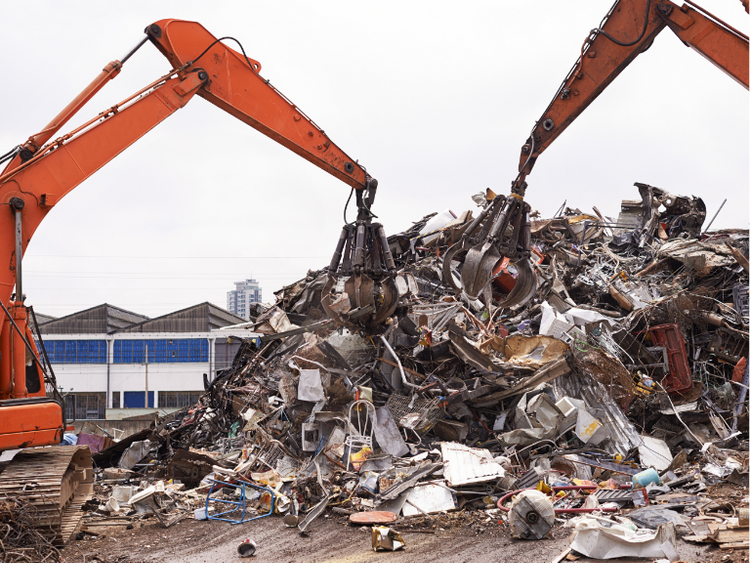Scrap Prices North America

CRU: Scrap Prices Lift from Restocking, But Less Than Expected
Written by Aaron Kearney-Keaveny
September 23, 2022
By CRU Research Analyst Aaron Kearney-Keaveny, from CRU’s Steelmaking Raw Materials Monitor
The CRU metallics price indicator (CRUmpi) rose by 2.2% month-on-month (MoM) to 312.3, following four continuous months of decline since May 2022. This MoM rise in the CRUmpi was specifically driven by a sharp rebound in Asian scrap prices while European prices stabilized.
Seasonal restocking has seen a delay as buyers preferred working through existing inventory rather than buying fresh stock. The resultant low availability of metallics has provided some support to prices, although ongoing steel production cuts in major economies continue to undermine demand.
High Inventories and Weak Demand Restrict Seasonal Rebound
In North America and Europe, scrap prices and demand have remained subdued from the high inventories seen since the panic buying following the onset of war in Ukraine. The loss of energy supply from Russia has pushed numerous European steelmakers to idle some facilities or reduce utilization rates. The resultant decline in demand for metallics – particularly scrap – is outweighing supply cutbacks, keeping prices rangebound.
Turkey, the largest scrap import market, did see a rebound in scrap prices in the middle of August. However, the government’s decision to increase gas and electricity prices led mills to lower their run rates as export sales became less profitable following the cost rise.
In Brazil, scrap prices have stabilized despite a continued decline in steel prices – down ~5% MoM for both longs and flats. While mills continue to put pressure on scrap dealers to reduce prices, elevated generation and collection costs limit the scope for further price reductions. Meanwhile, the country’s scrap exports have jumped 7.5 times MoM to 30kt in August, with popular destinations being the Asia ex-China markets. This has also provided some support to scrap prices despite weak domestic sentiment.
Within Asia, Chinese domestic scrap prices increased by RMB70 MoM in September, aided by higher demand from EAF-based mills which raised output with the gradual relaxation in electricity supply restrictions. Although worries regarding the weak housing sector remain, construction activity is expected to accelerate before the 20th National Congress Meeting. Meanwhile, steel demand remains subdued in Southeast Asian countries, where austerity measures by regional governments have led to construction and infrastructure project cancellations. Nevertheless, scrap prices have rebounded, aided by the sudden rise in Turkish import prices during the middle of August.
Global Ore-Based Metallics Output Reduced Due to Weak Demand
The delayed seasonal restocking and focus on using up present inventory has also been seen in the ore-based metallics markets. Suppliers of metallics, be they scrap recyclers, pig iron, or HBI producers, responded to low consumer buying interest, rising input/processing and logistical costs, and subsequent falling margins by curtailing their output.
For pig iron, CRU learned from market sources that major mills in the US are well supplied from previous purchases, and, with demand continuing to weaken, many have enough material to last through 2022 Q4. Brazilian pig iron export offers are down $20 per ton MoM and producers have started reducing production – citing unfavorable market conditions. They are hopeful for an improvement in market sentiment from 2023 Q1 onwards. In Asia, prices are getting support from post-monsoon restocking demand.
Outlook: Limited Upside Due to Weak Steel Demand
CRU remains cautious about the strength of the current restocking cycle. Risks around extended steel production curtailments have grown with the deepening energy crisis across Europe. Although European scrap dealers are optimistic about passing on higher processing costs to mills, they do acknowledge that it will depend on the strength of demand and buyers’ willingness to accept higher prices.
Meanwhile, steel demand prospects for other major regions, such as Asia and North America, continue to be hampered by the expectations of rising inflation and low consumer spending on goods such as consumer durables and automobiles.
For ore-based metallics, prices have the potential to soften slightly as sellers try to entice buyers back to the market, but higher-than-historical production costs will limit significant price reductions. steelmakers have found ways to stretch their metallics inventories for longer by substituting pig iron with scrap and vice versa in their furnaces, giving them better-negotiating power with suppliers.
This article was originally published on Sept. 22 by CRU, SMU’s parent company.
Request more information about this topic.
Learn more about CRU’s services at www.crugroup.com
Aaron Kearney-Keaveny
Read more from Aaron Kearney-KeavenyLatest in Scrap Prices North America

HRC vs. prime scrap spread widens in June
The price spread between HRC and prime scrap widened in June.

Ferrous scrap pricing sideways in June
Ferrous scrap prices in the US have remained stable from May to June.

HRC vs. scrap spread widens over $150/ton in March
The HRC vs. prime scrap spread increased again in March.

HRC vs. prime scrap spread increases in February
The price spread between hot-rolled coil (HRC) and prime scrap widened in February ahead of the implementation of President Trump’s tariffs on steel.
HRC vs. prime scrap spread narrows again in January
The price spread between hot-rolled coil (HRC) and prime scrap continued to narrow in January, according to SMU’s most recent pricing data. While SMU’s average HRC price edged down week over week (w/w), it rose compared to a month ago. The January price for busheling also increased from December. Our average HRC price as of […]
